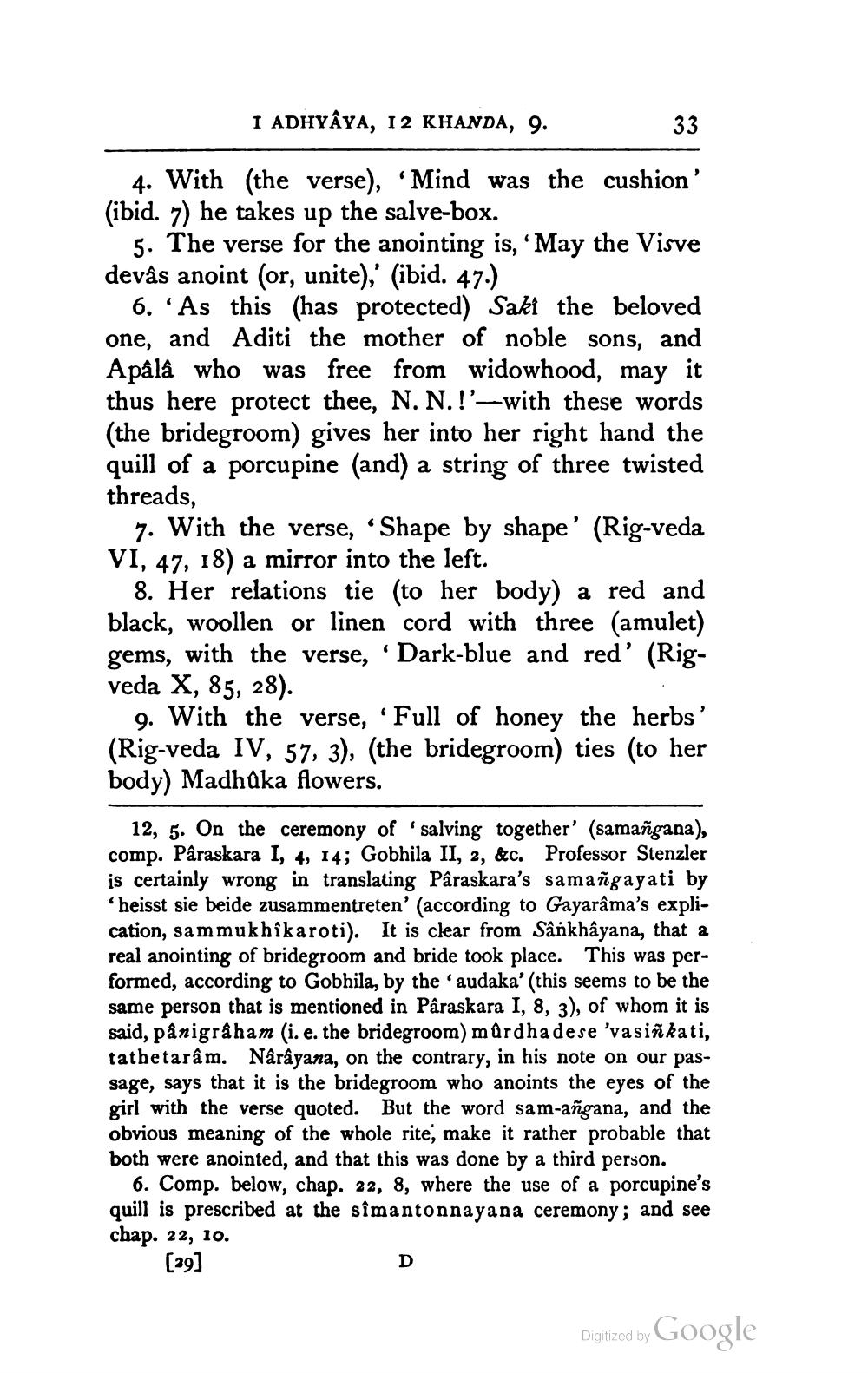________________
I ADHYAYA, 12 KHANDA, 9.
33
4. With (the verse), ‘Mind was the cushion' (ibid. 7) he takes up the salve-box.
5. The verse for the anointing is, 'May the Visve devâs anoint (or, unite),' (ibid. 47.)
6. 'As this (has protected) Saki the beloved one, and Aditi the mother of noble sons, and Apâlâ who was free from widowhood, may it thus here protect thee, N. N.!'-with these words (the bridegroom) gives her into her right hand the quill of a porcupine (and) a string of three twisted threads,
7. With the verse, "Shape by shape' (Rig-veda VI, 47, 18) a mirror into the left.
8. Her relations tie (to her body) a red and black, woollen or linen cord with three (amulet) gems, with the verse, ‘Dark-blue and red' (Rigveda X, 85, 28).
9. With the verse, 'Full of honey the herbs' (Rig-veda IV, 57, 3), (the bridegroom) ties (to her body) Madhuka flowers.
12, 5. On the ceremony of salving together' (samañgana), comp. Pâraskara I, 4, 14; Gobhila II, 2, &c. Professor Stenzler is certainly wrong in translating Pâraskara's samañgayati by ‘heisst sie beide zusammentreten' (according to Gayarâma's explication, sammukhîkaroti). It is clear from Sânkhâyana, that a real anointing of bridegroom and bride took place. This was performed, according to Gobhila, by the audaka' (this seems to be the same person that is mentioned in Pâraskara I, 8, 3), of whom it is said, panigraham (i.e. the bridegroom) mardhadese 'vasiñkati, tathetarâm. Narayana, on the contrary, in his note on our passage, says that it is the bridegroom who anoints the eyes of the girl with the verse quoted. But the word sam-angana, and the obvious meaning of the whole rite, make it rather probable that both were anointed, and that this was done by a third person.
6. Comp. below, chap. 22, 8, where the use of a porcupine's quill is prescribed at the simantonnayana ceremony; and see chap. 22, 10.
(29)
n
Digitized by Google




